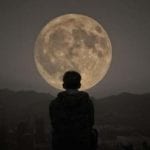 Technology
Technology  Technology
Technology  Humans
Humans 10 Everyday Human Behaviors That Are Actually Survival Instincts
 Animals
Animals 10 Animals That Humiliated and Harmed Historical Leaders
 History
History 10 Most Influential Protests in Modern History
 Creepy
Creepy 10 More Representations of Death from Myth, Legend, and Folktale
 Technology
Technology 10 Scientific Breakthroughs of 2025 That’ll Change Everything
 Our World
Our World 10 Ways Icelandic Culture Makes Other Countries Look Boring
 Misconceptions
Misconceptions 10 Common Misconceptions About the Victorian Era
 Mysteries
Mysteries 10 Strange Unexplained Mysteries of 2025
 Miscellaneous
Miscellaneous 10 of History’s Most Bell-Ringing Finishing Moves
 Technology
Technology Top 10 Everyday Tech Buzzwords That Hide a Darker Past
 Humans
Humans 10 Everyday Human Behaviors That Are Actually Survival Instincts
 Animals
Animals 10 Animals That Humiliated and Harmed Historical Leaders
Who's Behind Listverse?

Jamie Frater
Head Editor
Jamie founded Listverse due to an insatiable desire to share fascinating, obscure, and bizarre facts. He has been a guest speaker on numerous national radio and television stations and is a five time published author.
More About Us History
History 10 Most Influential Protests in Modern History
 Creepy
Creepy 10 More Representations of Death from Myth, Legend, and Folktale
 Technology
Technology 10 Scientific Breakthroughs of 2025 That’ll Change Everything
 Our World
Our World 10 Ways Icelandic Culture Makes Other Countries Look Boring
 Misconceptions
Misconceptions 10 Common Misconceptions About the Victorian Era
 Mysteries
Mysteries 10 Strange Unexplained Mysteries of 2025
 Miscellaneous
Miscellaneous 10 of History’s Most Bell-Ringing Finishing Moves
10 Cool Facts about the Most Mysterious Mammal on Earth
Go to your local zoo and hang out by the okapi enclosure for a few hours. As you do, you’ll hear the conversations of other people as they walk up to see the mysterious animal. “Oh, wow,” some will say in hushed tones, “it’s like a zebra mixed with a giraffe!” Others will come to a different conclusion, pondering whether, sometime in the past, a zebra and a donkey loved each other very much, and then… you know the rest.
But the okapi is a bit more complicated than some weird zebra-donkey cross-breed. And while it is related to the giraffe, that’s not nearly the whole story surrounding this wonderfully elusive animal. In this list, you’re going to learn all about nature’s most mysterious large mammal. Nobody knew about the okapi’s existence in the first place until the turn of the 20th century. (Well, no white person, that is—but that’s a debate for a different day.) Even now, the okapi is so solitary and private that we still barely know anything about it.
But we’ll share with you all that science has been able to learn about the giraffe’s distant cousin, regardless! Read on to learn more about the strangest animal in all of the jungle.
Related: 10 Amazing Animals with Unique Environmental Adaptations
10 The Stuff of Legend
Centuries ago, African legend held that deep in the middle of the mysterious Ituri Forest existed a strange and mythical beast. Local Africans weren’t entirely sure of its existence even after having lived in the region for thousands of years. As the story was handed down, it held that the animal had the body of a horse, the stripes of a tiger, and the legs of a zebra.
Because people rarely ever saw the creature for themselves, a legend sprang up around it. Some people said it didn’t exist at all. Others claimed that this “creature” had mystical powers and lived across multiple realms. Still, other central African tribesmen held that it was all crap—a story made up by shamans, medicine men, and people with fanciful imaginations.
In reality, of course, the okapi actually does exist. But it lives in such deep, dense rainforest that it’s nearly impossible to see in the wild. And it lives such a quiet, solitary life that the chances of happening upon one are nearly zero—even for locals who have lived in that part of Africa for thousands of years. So, most locals shrugged their shoulders at the tale and assumed it was just a made-up animal. Out of sight, out of mind. And over the centuries, as people continued to very infrequently catch proof of its presence, the legend of the mysterious okapi grew.[1]
9 Finally Found…
It wasn’t until the very last years of the 19th century that a white person even knew that the okapi existed. The man was Henry Morton Stanley, and the occasion was a brutally arduous journey across the Congo Basin. During that trip, he learned about the mysterious mammal from locals. Some tribesmen knew it as an “atti,” while another group termed it the “okapi.” That, obviously, is the name that stuck in Stanley’s mind—and now, in the whole wide world. But even then, everybody only spoke about the animal supposedly existing without any real proof of what it was, where it lived, or from whom it had descended.
So Stanley got to work… sort of. He never actually saw an okapi anywhere in the wild during his trip across the Congo Basin. Surprise, surprise, right? Almost no one had ever seen an okapi, so why would Stanley be any different? He did do one critical thing, though: He wrote down every single description he could find from the natives about the supposed beast. Back home, Europeans were still skeptical as to whether the animal really existed. But at least Stanley laid the groundwork.
Then, a decade later, in 1901, it finally happened: Another explorer named Sir Harry Johnston happened upon the skin and skull of a deceased okapi. Score! Johnston sent the findings back to Europe, where they were promptly logged and studied. Scientists there were floored that a new species—and such a large species, no less—could have existed seemingly forever without anybody knowing much about it. They were so shocked, in fact, that they did the only thing that came naturally to them: They called the species Okapia johnstoni, naming it after Sir Harry in honor of his trip through the wilds.[2]
8 … and Finally Proven!
That an animal as big as an okapi wasn’t confirmed to exist until the start of the 20th century is mind-boggling. But here’s something even crazier: The okapi wasn’t actually caught on camera in the wild until well into the 21st century. Seriously! It wasn’t until 2008—a little over a year after the first iPhone came out—that a wild okapi was finally successfully photographed in the Ituri Forest. People had photographed okapis that lived within the forest’s specifically crafted game reserve plenty of times by then. But a truly wild okapi not living on the reserve? Nope. Never once had one been caught on camera.
That year, brave (and very patient) scientists from the Zoological Society of London settled in to wait out a wild okapi. They set up a ton of different camera traps in areas where non-game reserve okapi were believed to live. And then they waited. And waited. And waited. Days turned into weeks. Weeks turned into months. Finally, after several months with nothing to report, their perseverance paid off!
So, if you had doubted up until this point whether the okapi truly is the most secretive and mysterious mammal on earth, doubt no more. The world’s foremost okapi experts needed space-age technology and dozens of specialized cameras just to snare a single photograph of a single wild okapi in the 21st century. And yes, we can guess what your next thought might be: God forbid you ever agree to play a game of hide-and-seek with the elusive beast.[3]
7 It’s Actually in the Giraffe Family
Perhaps we should have started the list here—but isn’t it more fun to build the mystery? While the okapi may resemble a zebra, he’s not related to our striped friend. Instead, the okapi is a giraffe-adjacent cousin. Both the okapi and the giraffe are in the exact same biological family as classified by the experts—the Giraffidae.
Along with that, both animals have long necks, spots and stripes on their bodies that dapple in the sunlight, and little horns on their heads called “ossicones.” Those are basically bumps that exist underneath their fur. These bumps are much more noticeable on the giraffe’s head than on the okapi’s, but they exist on both and link the animals physically via genetics.
More than that, the DNA proves things beyond a shadow of a doubt. Scientists have discovered, based on their respective bloodwork, that the giraffe and okapi indeed share a common ancestor. That was a critical finding for biologists because it allowed them to assume (and then later learn) important things about the okapi even though that mysterious mammal is nearly impossible to find in the wild.
Their digestive systems are similar to those of the giraffe; their eyes, skin, and muscles work in similar ways, and their bones and joints function in (broadly) parallel manners. It’s not a perfect match, of course. But the giraffe is the closest known living thing to this secretive jungle creature.[4]
6 See Ya Never!
One of the reasons that scientists didn’t know much about okapis until the 20th century is because of their unique striping pattern that allows them to hide in plain sight. Think of their back leg stripes as a very clever disguise, in fact. On the one hand, they exist so that baby okapis can track and follow their mothers through the jungle. But even more importantly, the stripes exist to confuse predators and help the mammals blend into the forest.
Think about how the jungle looks from the forest floor. Most sunlight is trapped up in the trees high above, but rays of light inevitably pop through and shoot all the way down to the ground. The okapi’s white leg stripes are meant to resemble those rays of light. The solitary okapi is aided in its quest to remain alone and stay on its own by using those long-ago evolved stripes to disappear into the forest. And within seconds, it’s like the gentle giant was never there in the first place.
Specifically, when it comes to predators, because those white stripes then break up the body shape like rays of sunlight, jaguars and other would-be killers have a mighty difficult time finding the okapi and tracking its outline on the hunt. The okapi becomes an optical illusion and a figment of a jaguar’s imagination. And in time, the jaguar gives up on what it was trying to do—have the okapi for dinner. Smart![5]
5 Lives in Peril
The okapi’s skin naturally secretes a matter called sebum. It’s an oily, waxy substance that serves a few different purposes. For one, it helps the okapi’s skin stay protected even amid the endless dampness of the forest. Think of it like a permanent moisturizer that allows the okapi’s skin to feel velvety to the touch. No other animal on earth has a skin situation like that, and it allows the okapi’s velvet-like coat to remain smooth, soft, and cuddly. That’s an amazing thing, as it is yet another trait that makes the okapi unique. But it’s also become a deadly trait that puts the okapi at risk for extinction.
Because the okapi’s skin is so soft, smooth, and beautiful, poachers have naturally been attracted to the animals. Illegal poachers and smugglers have gone deep into the Ituri Forest for years to try to bag okapis, skin them, and sell their hides. In time, the animals have become one of the most sought-after creatures in the illegal wildlife trade. There is a black market that runs all across the Democratic Republic of the Congo, and in it, the okapi’s skin fetches top dollar.
Sadly, that has devastated the already-small okapi population throughout the dense and remote forests of the northeastern part of the country. And along the way, this gorgeous animal’s entire existence has been put into terrible peril.[6]
4 Tongue Tied
The okapi has one of the longest tongues in the animal kingdom. In full-grown adult males, the appendage can reach more than 14 inches (36 cm) in length. But size alone doesn’t matter here. (Isn’t that right, fellas?) It’s more about what the tongue can do, too. See, the okapi’s dark purple (and sometimes nearly black) tongue serves a very specific purpose: as a cleaning tool.
The mysterious mammal will shoot the tongue out of its mouth and wrap it around its face to clean its eyes and ears. Its tongue is incredibly flexible and strong, so it is used to keep everything clean and clear so that the okapi has all its senses while living deep in the jungle. In this regard, the okapi is pretty much the lizard of the mammal world.
But the long, active tongue—and its use in cleaning eyes and ears—is critically important to an okapi’s health and safety. For one, the okapi’s tongue actively keeps rainforest bacteria from growing on the animal’s skin, head, and in its various orifices. In an environment as moist as that in a deep Equatorial jungle, bacteria are rampant and can fester. But the okapi’s tongue ensures the animal remains healthy and safe from various viruses, infections, and other health issues. Doubly so when we recall from earlier how the okapi’s skin is already secreting sebum to counteract the rainforest’s eternally wet nature. So, tongue health matters!
The tongue comes into play in another way, too: gathering food. Okapis typically eat anywhere from 40 to 65 pounds (18 to 29.5 kg) of leaves in a single day. The rainforest isn’t hurting for leaves to go around for a meal, thankfully. But the okapi isn’t using its hooves to pick leaves up off the ground. And, of course, it doesn’t have hands with opposable thumbs like we do. So its tongue suddenly becomes the critical tool in acquiring and eating food to maintain its body weight and sustain its development.[7]
3 The Silent Language
Like most animals, okapis have a language that they use to communicate with each other. Of course, it doesn’t have nearly as many words as a human language does. (Well, we don’t think it does, at least.) But what’s fascinating is that their language is mostly inaudible to the human ear. Sure, at times, okapis are known to use a series of bleats, barks, and whistles to communicate with each other. But that’s pretty normal as far as intraspecies communication is concerned. What’s wild is that okapis also have an unheard language that escapes human attention!
Okapis have highly developed senses of hearing. Along with that trait, they can emit and detect sounds far beyond our mortal range of awareness. Specifically, they produce ultra-low frequency calls known as infrasonic signals. Those calls out from okapi to okapi vibrate at frequencies way below 20 hertz. Thus, they are totally imperceptible to the human ear—and to the ears of virtually all other mammals. So, you could be standing directly between two okapis, they could be “talking” to each other, and you’d never hear one single sound or syllable.
The science behind it centers on the physiology of the okapi’s ears and vocal cords. Inside their large, cute ears, okapis have unique, specialized structures that allow them to hear calls that come in on lower frequencies than nearly any other mammal. In tandem, their vocal cords are adept at producing those ultra-low vibrations. And those vibrations travel extremely well through the dense jungles that okapis call home.
Scientists have only recently developed the proper (and very sophisticated) computer analyses to pick up these calls. In doing so, we have only scratched the surface in beginning to understand the okapi’s behavioral dynamics, social structure, mating rituals, and more. Most of it is still a mystery![8]
2 Tragedy Strikes the Reserve
Unfortunately, the okapi is the subject of some incredibly sad situations, too. In 2012, at the Okapi Wildlife Reserve in the far northeastern corner of the Democratic Republic of the Congo, a team of illegal elephant poachers raided the reserve and created a horrific tragedy. Six rangers tasked with protecting okapis from hunters and poachers were murdered. Other reserve workers were then held hostage. And some of the okapis themselves became victims of this unfathomably violent act, too, after the poachers slaughtered 13 of the innocent animals as well.
The poachers were mad about a government crackdown on the illegal elephant tusk trade elsewhere in the DRC. Knowing how valuable okapis are to the DRC as a conservation group and how much of the world’s environmental focus centers on animals like the okapi, they decided to attack these innocent animals and the human beings tasked with caring for them.
Sadly, the illegal wildlife trade continues to thrive in the DRC. Poaching represents an economically attractive career option for young men with few other job prospects. Despite it being horribly violent (not to mention illegal), scores of young men enter the trade to make money and provide for their families. That the okapi has such a unique, velvety hide—and that there are relatively so few okapis in the wild today—makes them doubly attractive to poachers seeking to slaughter innocent animals merely to make money.
Regrettably, 2012’s tragedy is far from the only horrible story coming out of the northeastern corner of the DRC in recent years. Five years after that, in 2017, poachers and smugglers massacred another group of park rangers and reserve workers while in pursuit of okapi pelts to sell on the black market. The DRC’s national government has been in turmoil for decades now, and its reach doesn’t extend into the furthest and most remote corners of the country’s forested regions. Thus, sadly, massacres like these two may yet happen again without any kind of government oversight and legitimate protections for okapis and the brave, tireless workers who aid them.[9]
1 On The Brink of Extinction
Unfortunately, there may not be many more okapis left in the wild for too much longer. While they once roamed the forests of Uganda and even reached into the Central African Republic, they are now confined only to one of the smallest quadrants of the far northeastern corner of the DRC. And in that war-torn region, their numbers are very, very low. Decades of political strife in the DRC have made it nearly impossible to put forth a full-throated conservation plan. And in the future, wildlife experts have identified the okapi as one of the world’s most significant threats for going extinct.
Among the issues at play are aggressive deforestation tactics put forth by people encroaching upon the okapi’s natural habitat. The dense forests where the okapi live are rapidly being cut down and burned up. In turn, that destruction is limiting the okapis’ food sources, disrupting their ability to find mates, and preventing them from living the secretive existence that previously allowed them to thrive.
The aforementioned illegal poaching and wildlife trades are other significant issues threatening the okapi’s entire existence. Because their beautiful coats are highly sought after in black market trades, locals have gotten into the poaching game at rates unseen in previous decades. Plus, paradoxically, the okapi’s super-secretive nature actually makes conservation even more difficult. Because they live so deep in the forest, poachers and hunters can venture into the jungle and try to track them down far away from prying eyes. And in turn, those who wish harm on the okapi rarely ever receive any consequences. Today, biologists believe there are fewer than 15,000 okapis left in the world.[10]








